Ladybug
Common Name: Lady Bug
Scientific Name: Coccinellidae
Location: Utah Lake Field Station
Invasive: Yes
The ladybug is a type of beetle. There are over 5,000 species of ladybugs in the world. Ladybugs are considered good luck in many countries.
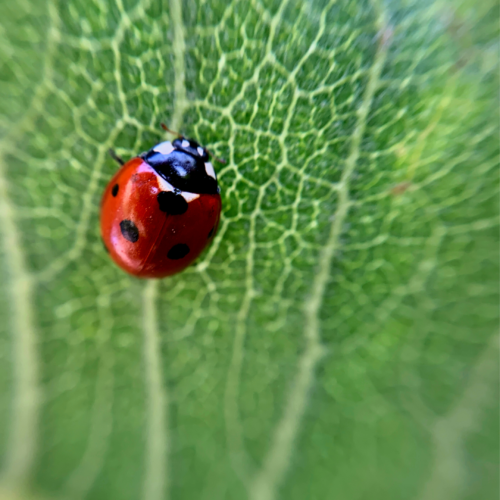
The ladybug is a type of beetle. There are over 5,000 species of ladybugs in the world. Ladybugs are considered good luck in many countries.
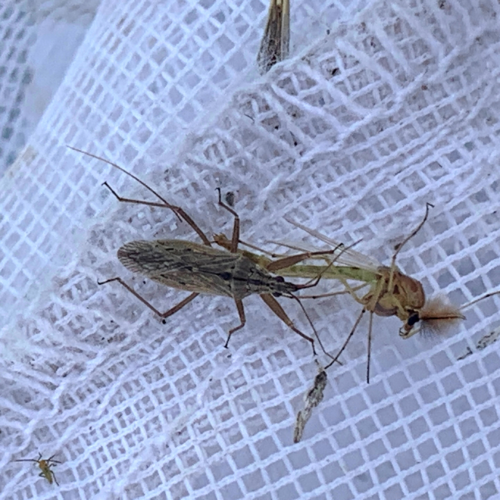
Damsel Bugs are an abundant species, often found in various gardens, fields, orchards, and field crops where they feed on caterpillar eggs, mites, froghoppers, and other small invertebrates. While they may feed on plants at times, they are not known for doing damage. This species is beneficial to have around as they help to control pests.

The most common jumping spider in the west, the Red-backed Jumping Spider is easily identified by stout black legs and a bright red abdomen. They usually build silk nests under rocks and wood. Molting, egg-laying, and courtship usually occur within these nests. They commonly feed on a wide array of insects but also will prey on other spiders. Although mostly harmless and not quick to bite, the Red-Backed Jumping Spider evolved to mimic the venomous and dangerous velvet ant to deter against larger predators.
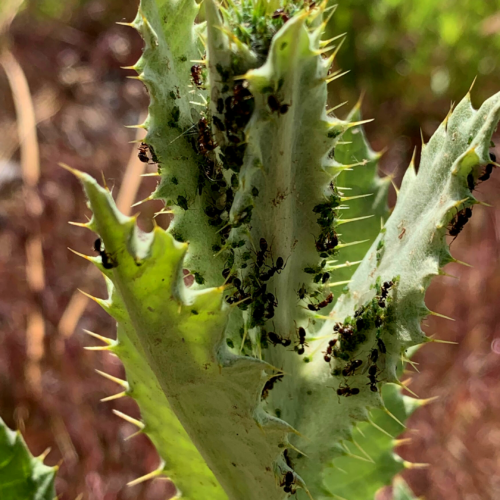
Originally native to Europe, the Pavement ant has been introduced to North America and has become well established. Their common name comes from the fact that this species usually makes their nests under pavement. They are well adapted to urban and suburban environments, and at times can become a household pest as well. As pavement ants establish colonies, neighboring colonies will war with one another to establish territories.

The Painted Lady is a butterfly found on every continent except Antarctica and Australia and is the most widely distributed butterfly in the world. Larvae caterpillars will feed on three hundred species of plants, but prefer thistle, mallow, and various species of legumes.
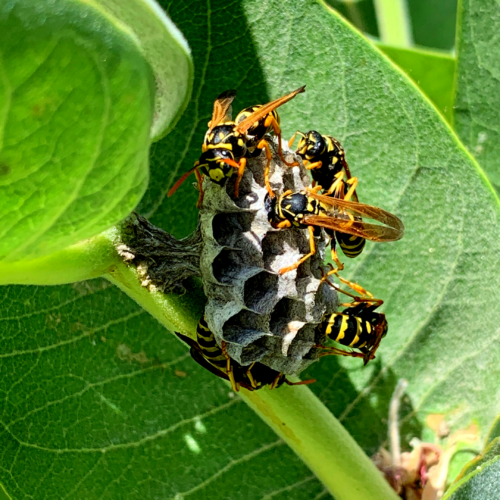
A common and well-known species of wasp, the European Paper Wasp is easily recognized by their yellow and black striped abdomen and the papery nests they build in trees, sheds, barns, and are commonly seen around other man-made structures.
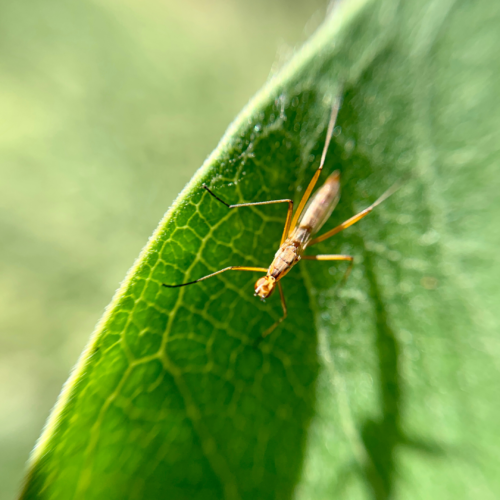
Stilt-Legged Flies are a family of about 30 species in North America. They are known for mimicking ichneumon wasps, and some species will mimic various ant species.
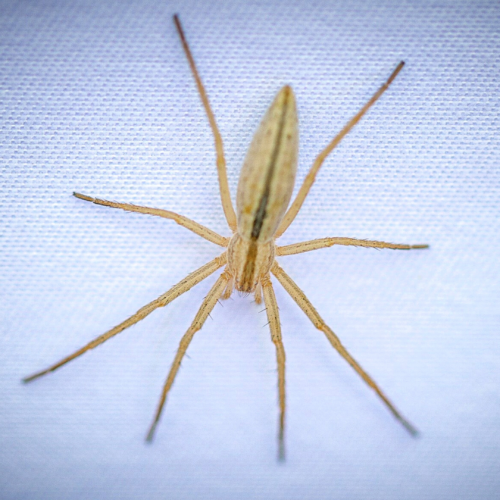
The Oblong Running Spider is commonly found in fields where they hang onto grasses, stems, flowers, or leaves of various plants and hunt by grasping their prey with elongated forelegs.
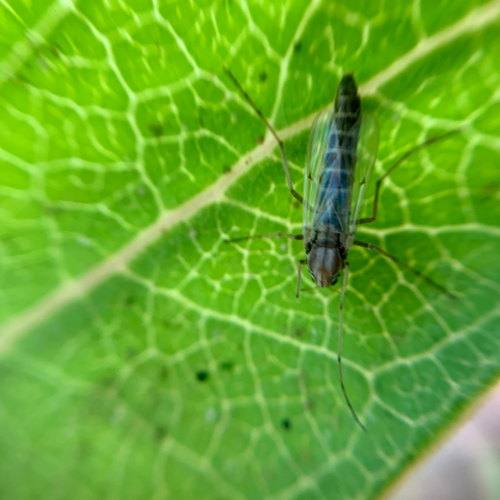
Mosquitos are a group of flies made up of about 3,500 species. 176 species live within the United States and four are commonly found throughout the Wasatch front. Common carriers of diseases that are transferable to humans, the mosquito population is the backbone of many parts of our ecosystem. They are an important food source for fish, insects, and birds, and without them many wildlife populations would crumble.
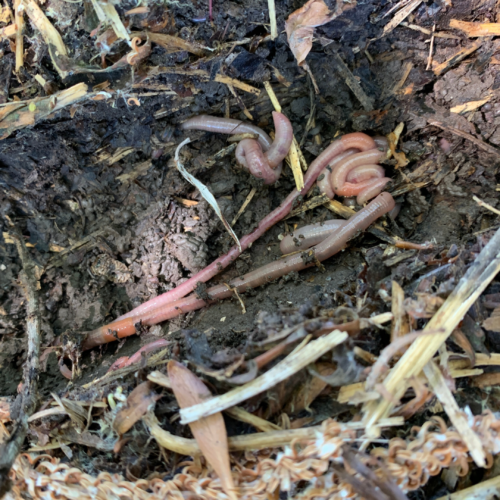
Native to Europe, the Common Earthworm has been introduced in North America and Canada. A large and conspicuous worm, this species is often seen above ground after rainfall, unlike most other worm species. This species primarily eats decaying plant material.
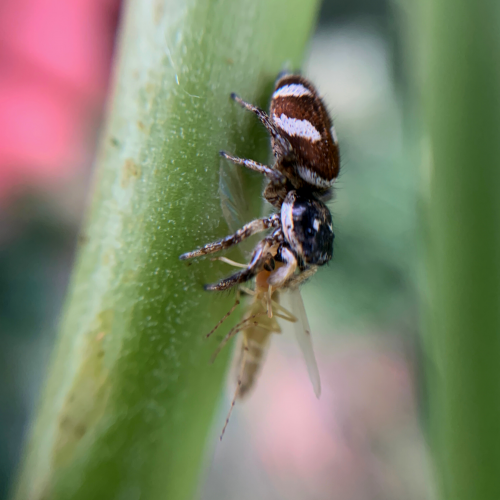
A common jumping spider in the Northern Hemisphere, the Zebra Jumping Spider is a small spider that does not build a web, and instead ambushes its prey. They have eight eyes, two being larger than the rest which gives them excellent vision. Some say the best vision of all arthropods. This helps them track movement and hunt insects up to the same size as them.
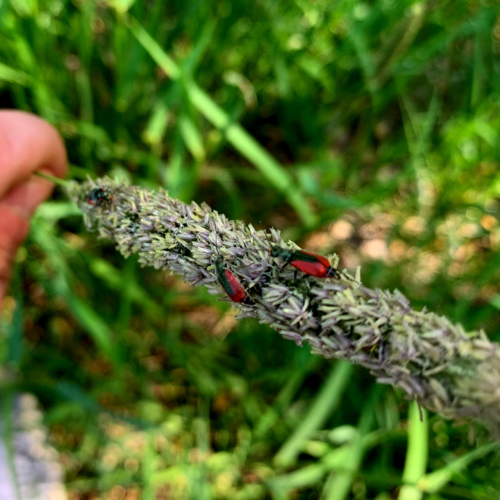
The Scarlet Malachite Beetle is a common site in meadows, but only for a narrow window of time. This beetle emerges from leaf litter in late spring, usually during May or June, and is gone by early summer and may not be seen for another year. In Europe, this beetle is vanishing rapidly and is a protected species.
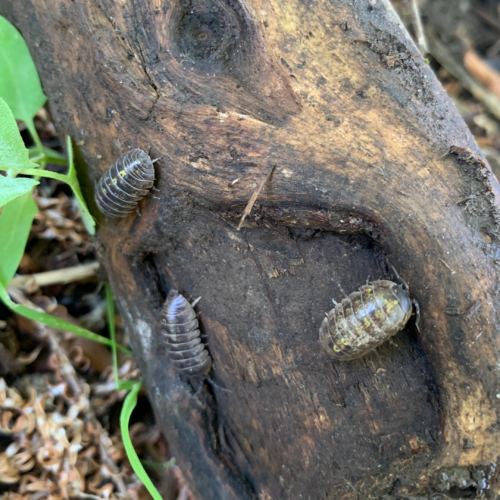
Known by many common names, the woodlouse is a well-known invertebrate native to Europe but widespread on almost every continent now. This species commonly feeds on decaying plant matter but will also eat algae, lichen, tree bark, snakeskin, and decaying invertebrates. Nicknamed by their ability to roll into a ball when threatened, the woodlouse is commonly kept as a harmless pet by children, where they breed readily in captivity and are easy to raise.
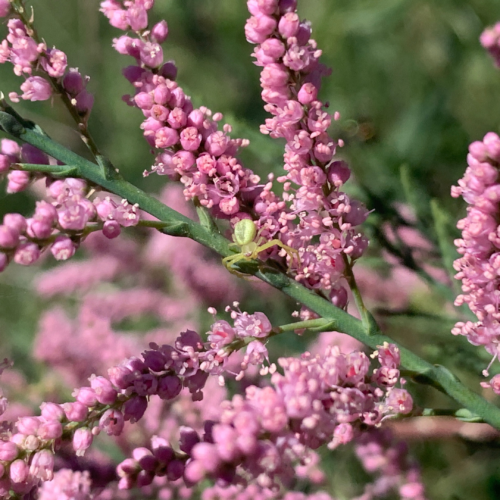
This small brightly colored spider is often found on yellow or white flowers where they camouflage themselves to protect against predators and ambush prey. When another insect comes to feed off the flowers they are grasped with the longer front legs and envenomated. The front legs are held open and to the side, giving the spider a crab-like appearance.

Chironomus is a genus of non-biting midges (small flies) in the bloodworm family. Although similar to a mosquito, these lookalikes can be identified by their feathery antennae. Bloodworms are so named for their larva forms that live underwater and resemble a red worm, a favorite food of many aquatic fish species.
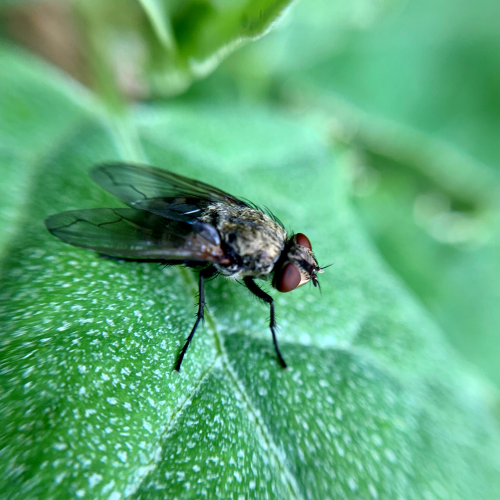
Cluster flies are a large black fly often confused with the common house fly. They are identified by a light and dark checkered abdomen. Unlike the house fly, cluster flies only feed on earthworms. The females lay their eggs near earthworm burrows and the young attach themselves to emerging worms to feed from them. This species hibernates in the winter, and in fall they are often found trying to hibernate inside houses. They lack mouthparts with which to bite so they are harmless visitors inside of homes.
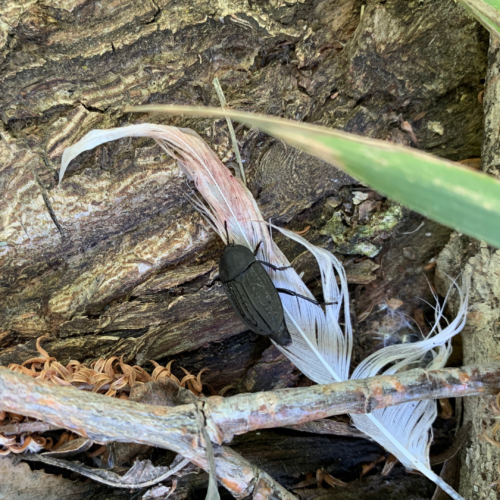
A large and distinctive beetle, the Ridged Carrion Beetle is often found on or near carrion. Both adults and larvae will feed on carrion and maggots. This species is usually black or dark red and has multiple pronounced ridges running down their body.
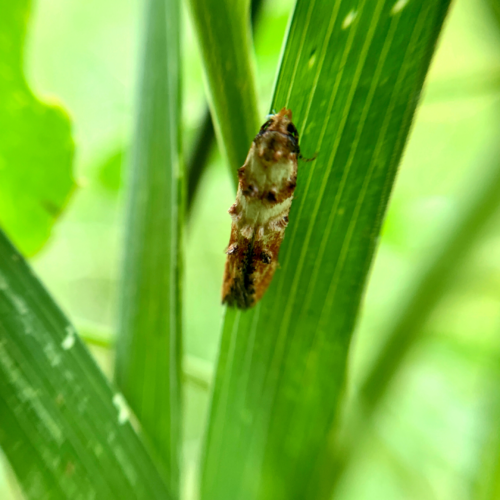
Glyphipterigidae is the family of sedge moths, of which there are currently 36 described species in North America. Adults of these moths are diurnal, meaning they are active during the daytime. Caterpillars of these species bore into the stems of grasses, hedges, and sedges, which is where this family gets its name.
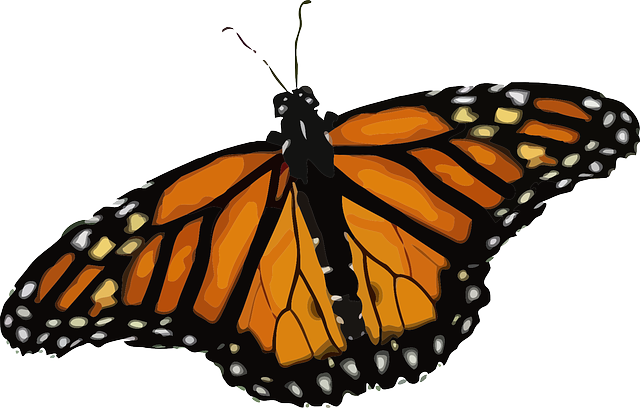
Monarch Butterflies will only lay their eggs on milkweed. Their job in the environment is to help pollinate many types of flowers and plants. They are also a major food source for small animals, including birds and insects. Monarchs are famous for their 3000-mile migration from Canada to Mexico. They have been recorded travelling 265 miles in one day.
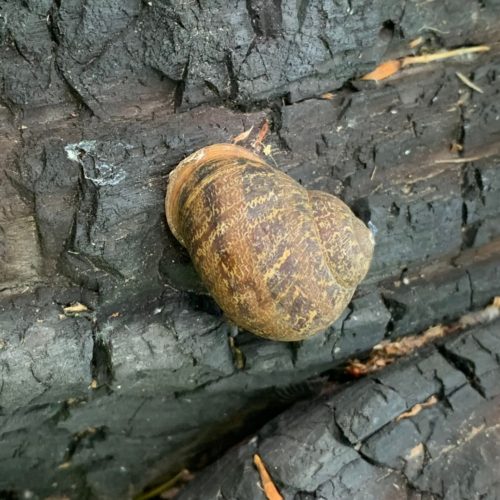
Of all the mollusks in the world, the Garden Snail is perhaps the most widely known. Originally native to the Mediterranean, it is now widely and commonly found on every continent in the world except Antarctica. The job of the garden snail is to recycle the nutrients in the ecosystem to keep the plants rich and healthy. They do this by eating decaying plants, fungi, and soil. Snails move by contracting their muscles in and out in a wave-like motion. One of the slowest animals, their top speed is 1.3 centimeters a second.
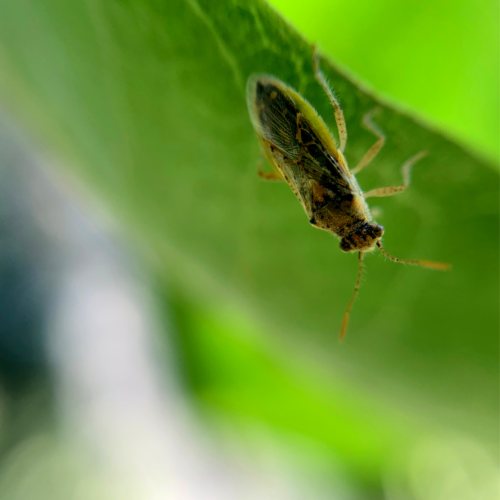
Hyaline Grass Bugs are a part of the Scentless Plant Bug family. Some of their favorite foods are sorghum, pistachio, and lettuce, and in large numbers they can infest crops. Their body can be brown, yellow, red, or varying shades in between, and the upper side of the abdomen is dark.
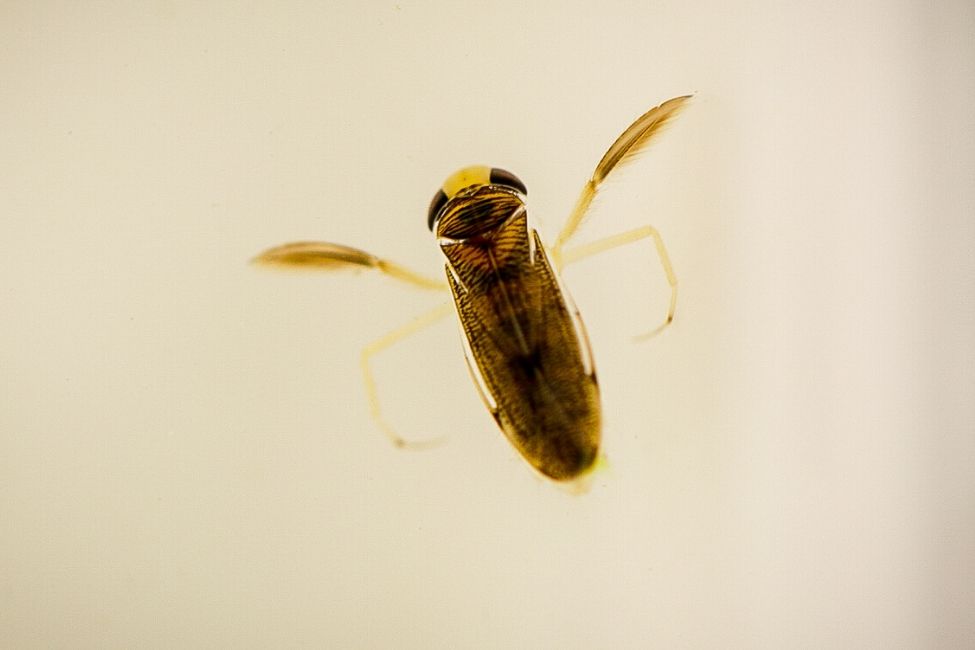
Their job is to feed on algae plants and dead organic material, cleaning their ecosystem and maintaining its overall health. They are called water boatman because of their boat-like shape and their oarlike hind legs.
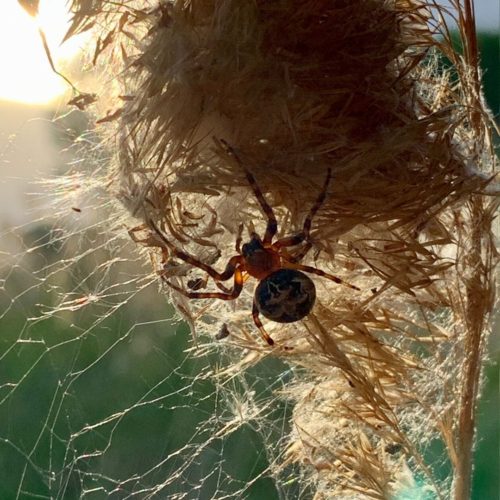
With a dark pattern on the abdomen resembling the furrow of a plow, red striped legs, and a fairly large size of 5mm to 14mm, this spider is a beautiful resident of Utah. They are often found in large webs across large bushes, eaves of homes, or anywhere else that they can find mosquitos, which they love to prey upon. Finding one outside your home is a welcome guest, as they are an all-natural defense against mosquitos who would otherwise come in contact with humans. Hummingbirds frequently harvest the webs from these spiders to help build their small nests.
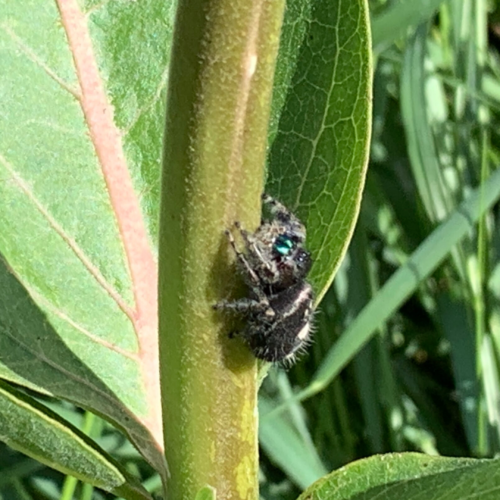
The Bold Jumping Spider is a large and curious jumping spider common throughout North America. So named for their bright blue-green colored jaws, or chelicerae. This spider doesn’t spin a web, and instead prefers to prowl around in search of prey, usually on a flat surface such as fence posts, logs, and exterior walls. Like most spiders, this species rarely bites humans, and can be a fascinating and curious species to watch as they go about their day searching for smaller invertebrates to hunt.
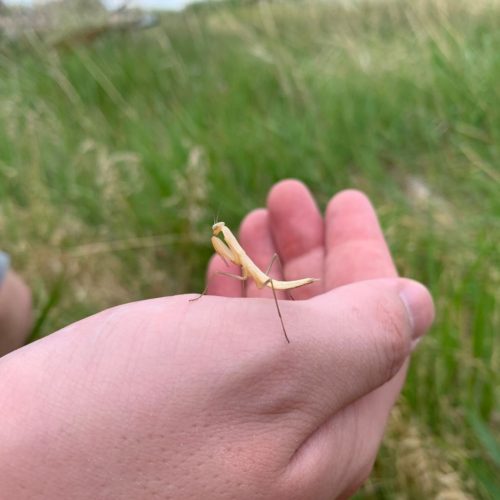
The Praying Mantis is native to Europe, but was found in the United States in 1899, and now is a common sight across most of the continent. Mantids come in both green and brown colorations and can grow between half an inch and three inches in length. Mantids are wonderful insects to have in your garden, as they enjoy preying on common pest insects that otherwise harm foliage.
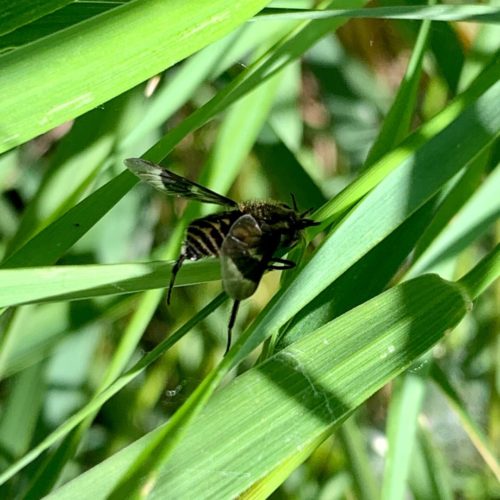
Smaller than their relative, the Horse Fly, Deer Flies are a flying insect that can make spending time outdoors miserable. While male deer flies drink nectar from flowers, females have a painful bite and will commonly drink blood from deer, but in the absence of deer they will feed off almost any mammalian host- sometimes including humans! Their bites are not lethal, just painful, and annoying.
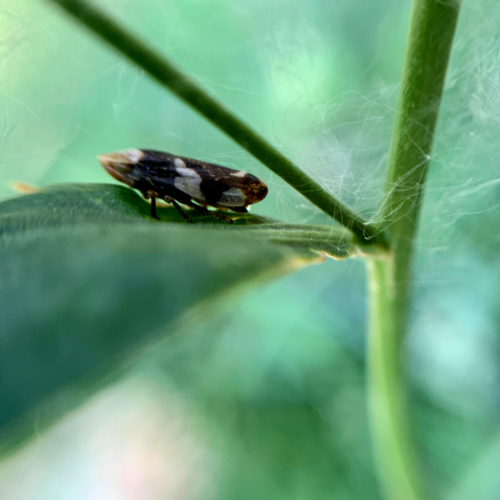
Introduced to North America, the Spittlebugs are a wide-ranging group of insects now found on almost every continent. The larva of this species coat themselves in a special foam to protect themselves from predators and drought. Adults leave the foam nest only after the foam dries out and the larvae are fully grown. Spittlebugs feed on various species of grasses, reeds, herbs, and olive trees. They come in many color varieties and patterns.
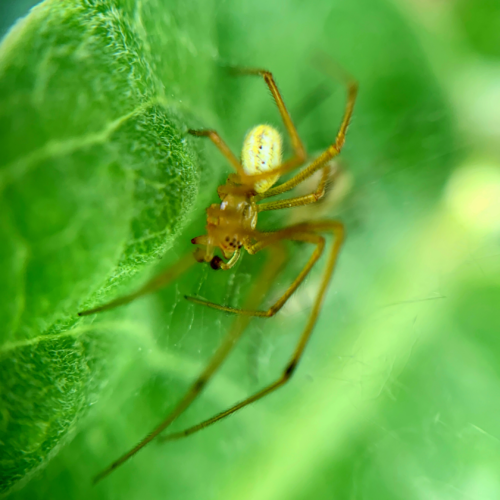
Native to Europe and introduced to North America, the Candy-Striped Spider is often found in woodland undergrowth and fields. In daylight these spiders hide themselves under curled leaves and come out at night to hunt various invertebrates. With a yellowish-green body and thin legs, Candy Striped Spiders have various red patterns on their abdomens. Most spider species are venomous, yet this species is not dangerous to people.
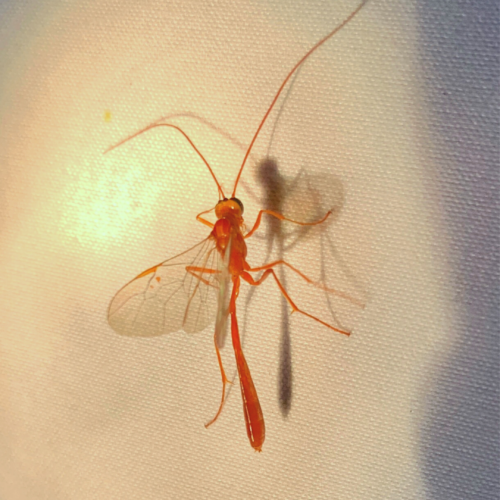
Ichneumonoidea is a superfamily of parasitoid wasps, known for laying eggs on or in the body of other arthropods. They do not sting like other wasps- rather the females have a long ovipositor used to lay eggs. Most species are brown or red. The group is thought to contain as many as 100,000 different species.

The Broken-Backed Bug is a common insect that preys on various species of flower, beans, and the seeds of both. Their bodies are light green, sometimes tan, with white eyes. Commonly found on sunflowers, this insect damages seeds by eating them, which prevents the seed from germinating. They are also carriers for a plant parasite that deforms the growth of flowers, which is why this bug carries the pest status.
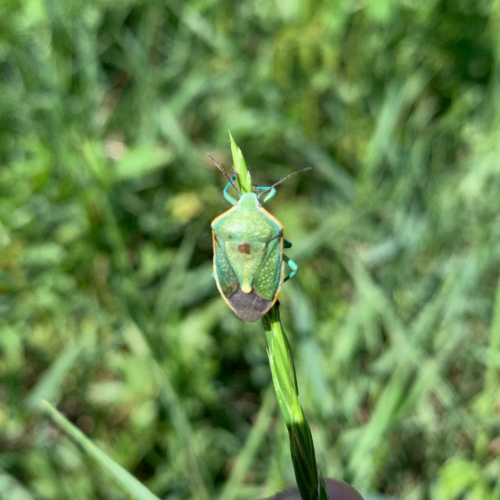
Adults of this strange species are light green and shield-shaped when viewed from above. They love to feed on weeds, including the invasive Russian Thistle, and various members of the wheat family of plants.
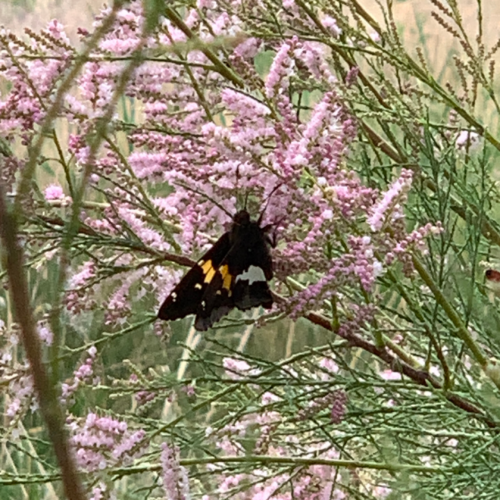
Named after the large white patch on the underside of both rear wings, the Silver Spotted Skipper is one of the largest of the skipper butterflies. Skipper butterflies are named after their quick and darting flight habits where they seem to “skip” around. The larval caterpillars of this species take two leaves and bind them together with silk to make a shelter that protects them from predators.
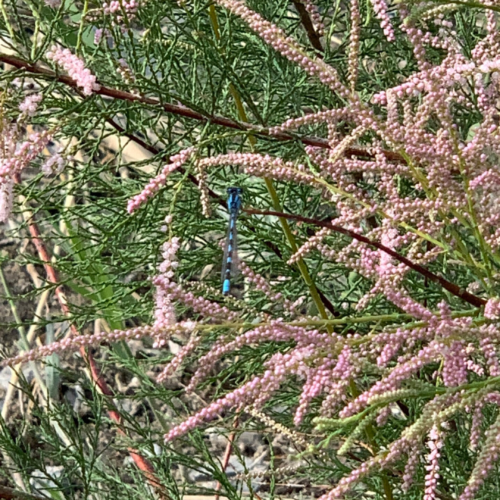
A common sight anywhere there’s water- the Familiar Bluet is identified by their vibrant turquoise-blue coloration. Males have blue around their eyes and the long black stripe down the throat is flanked with two smaller blue stripes. Females replace the blue with a light brown coloration instead. Damselflies love to hunt smaller insects as they fly through the air.
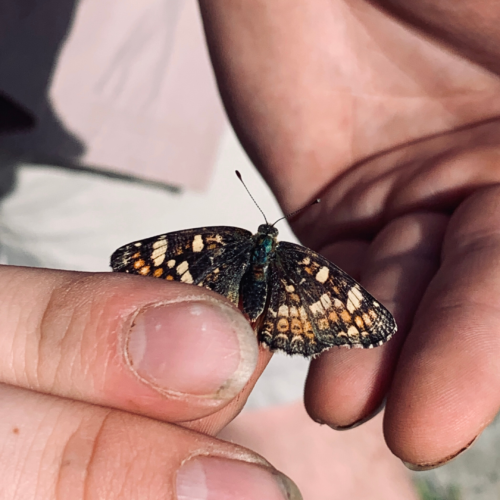
A common site in the western United States and Canada, the Field Crescent Butterfly flies from May to August. Identified by rusty orange and black tortoiseshell markings on the upper side of the wing, and yellow brown markings on the underside of the wing.
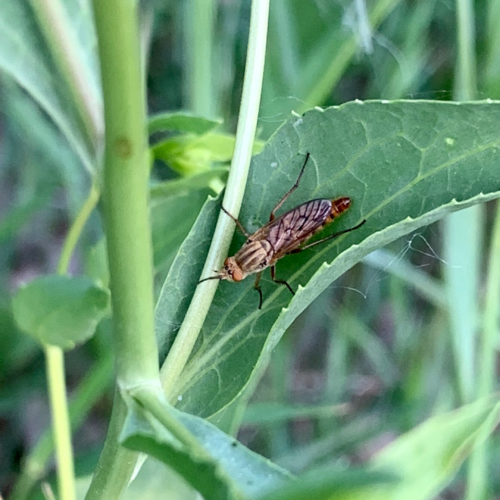
Therevinae is the name for the stiletto fly family. More than 1600 described species belong to this family. Adults are usually hairy with slender bodies and long legs. Stiletto flies are predatory and are often found in open areas such as pastures.
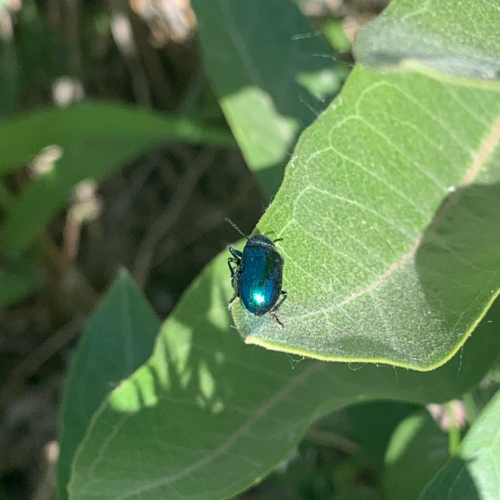
Found throughout Western North America, the beautiful Cobalt Milkweed Beetle is normally found in a narrow window of time from late spring to the beginning of summer. This beetle prefers to eat our native species of Milkweed, just like the well-known Monarch Butterfly. The toxic sap found in the leaves and stems of milkweed makes this beetle toxic to potential predators.
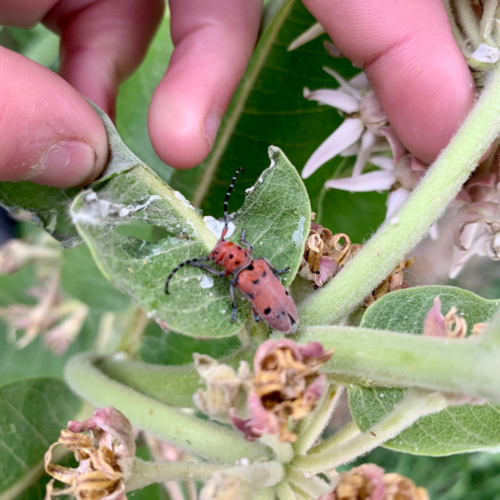
With an attractive red body with black stops and striped antennae, the Milkweed Borer’s entire life revolves around the milkweed plant. Larvae will burrow into the stem of the plant to overwinter and emerge the following spring as adults. Adult Milkweed Borers will feed on the leaves of various milkweed plants, although they prefer the Showy Milkweed species.

Despite the name, Plum Aphids are not only found on plum trees but can be found on peaches, apricots, almonds, and common reeds. They suck sap from the leaves of their host plants and will reproduce quickly as they do so. After three to thirteen generations, or whenever the aphids become overcrowded, they will then form wings and fly to a new host plant for the rest of the summer, until fall comes when they will fly back to their host fruit trees and lay eggs which will overwinter until the process begins again.
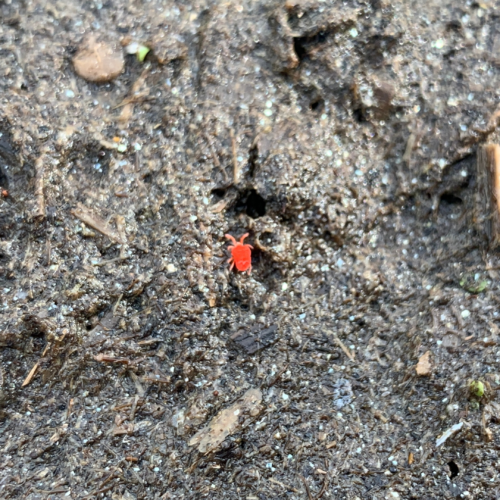
Commonly referred to as a pest, the Clover Mite is a small red arthropod in the arachnid family-the same as spiders. This species feeds on many different types of foliage and flowers including lawn grasses, clovers, strawberries, daffodils, and succulents. Clover mites reproduce parthenogenetically, meaning their eggs do not need to be fertilized and all are genetically female.
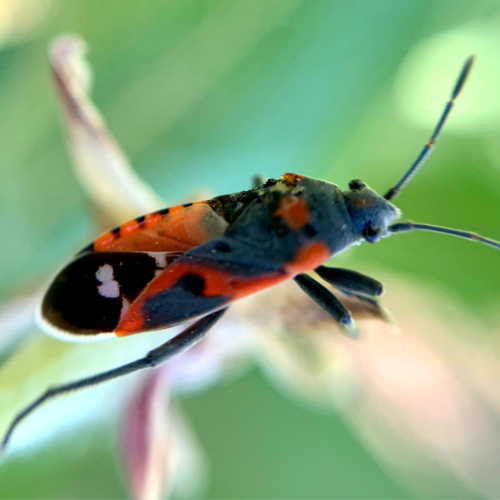
Native to Central and North America, the Milkweed Bug is primarily found on various species of milkweed plants, where they consume nectar and seeds. In the absence of those, they may feed on other insects.
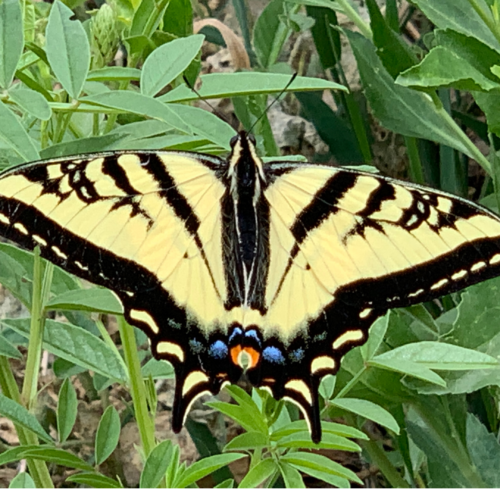
Native to the Western United States, the Swallowtail is a large 3-4″ butterfly with vibrant yellow and black markings and a pair of “tails” running off the hind wings, resembling the swallow bird. This species is active and hardly ever observed at rest, usually found flying around meadows, forests, and open country. The caterpillars prefer to feed off cottonwood, willow, quaking aspen, and many other types of trees.
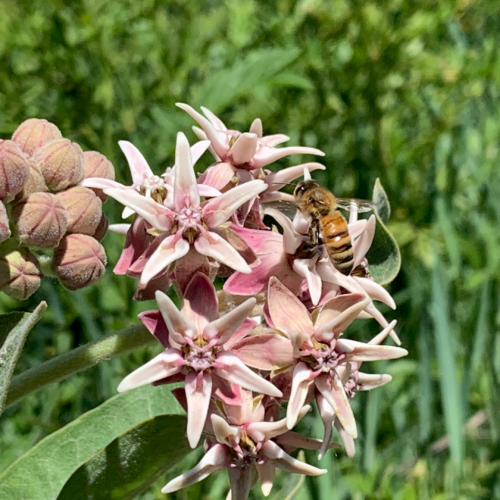
The most common of the 12 species of honeybee, the Western Honeybee is originally native to Europe and Asia but has been introduced to every continent except Antarctica. The honeybee is the first domesticated insect in the world and may have been domesticated as early as 2000BC by the Ancient Egyptians.
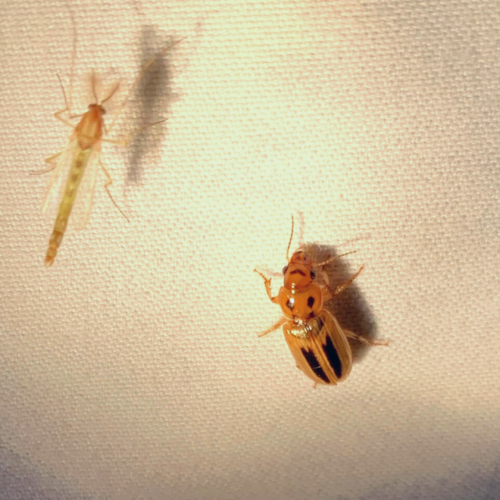
A common pest to the corn plant, adult Seed corn Beetles eat seeds, while their larvae are predators of other insects. Adults infest soil and target freshly planted seeds, usually in the spring. Damage is greatest during wet springs, or when low quality seed is planted.

Despite common myths, earwigs do not crawl into human ears. They do not pinch people either, despite their large pincers, and those are used in self-defense or for fighting other male earwigs for females. Earwigs are omnivores and typically eat plants and other insects. They are sometimes considered pests, as they have been known to damage crops, but overall, they prefer to consume other crop-damaging insects.
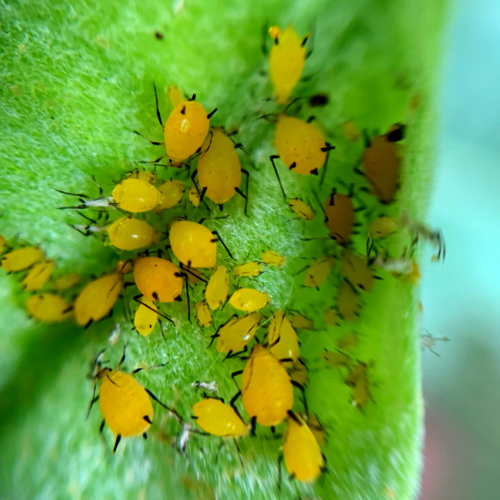
This bright aphid species is identified by its yellow body and black legs and antennae. These aphids are parthenogenic, meaning there are no males, and the females reproduce with nymph clones instead of laying eggs. These aphids feed on sap and, like most other aphids, secrete a sticky sugary liquid called “honey dew”.
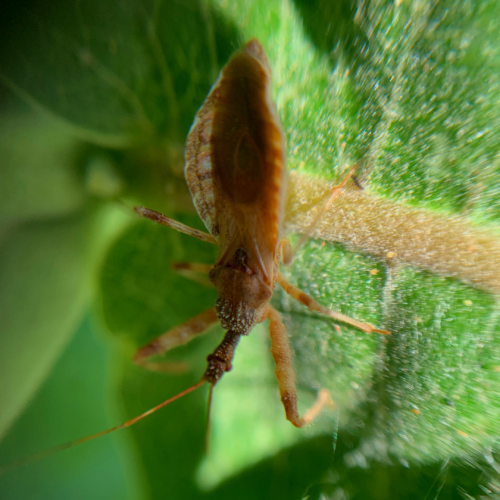
These assassin bugs are predatory and prey on other insects such as aphids, caterpillar eggs, ladybugs, etc. Their mouth parts are akin to a sharp beak which they use to stab their prey. The spines on their legs and head, which give them their name, may be used to subdue their prey.
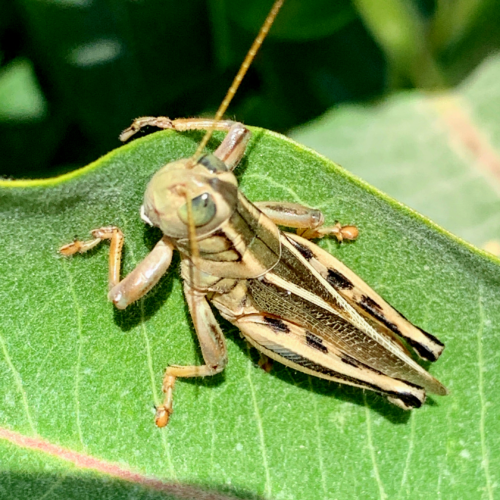
These relatively large grasshoppers are easily identified by the two yellowish stripes running down the top of their body. The two-striped grasshopper is a common species found across most of North America. They are considered pests by farmers because, while they eat a wide variety of plants, they will decimate grain crops in a way that prevents the plant from reproducing the next season.
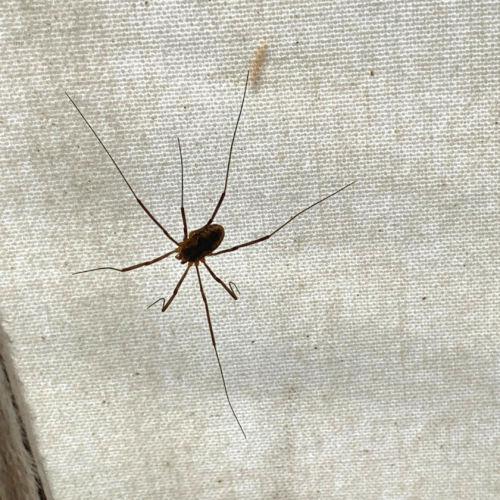
Harvestman are often misidentified as spiders because of their eight legs, and while they share the class “arachnid” with spiders, harvestmen differ due to the single, round, fused body region, only one pair of eyes, and unlike spiders they lack venom or silk glands. Harvestmen are omnivorous, often feeding on plants and small insects. While this species is not native to North America, they are not known to be a threat to native organisms or habitats.
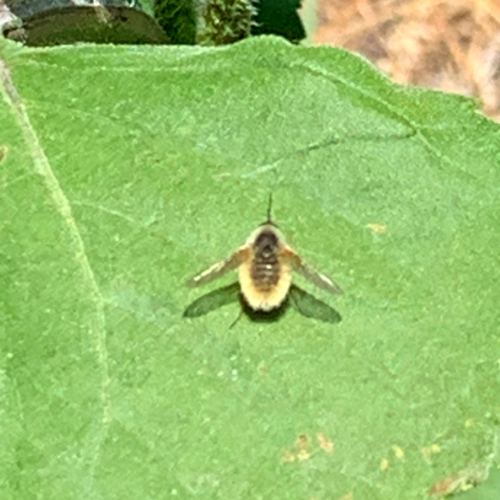
Bee flies, as their name suggests, resemble bees with their brown furry bodies and the buzzing sound they make when they fly. However, unlike bees, bee flies have two wings, large eyes, long skinny legs, and bee flies do not sting or bite. These insects are important pollinators, sipping nectar with their long proboscis. The larva of many bee fly species are parasitic, meaning the adult bee fly lays its larvae in ground-laying bee nests, and the fly larva will feed off of the bee larva.
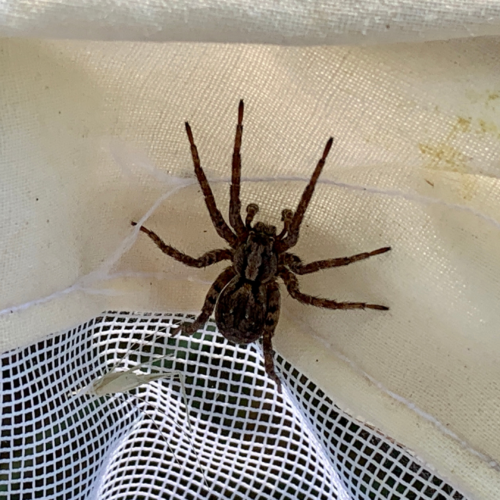
A beautiful and agile hunter, the Wolf Spider is aptly named by the way they chase down and hunt prey. Normally shy and reclusive, this species tends to live a solitary life and do not spin webs. They often hunt invertebrates across the ground, either chasing them over short distances or lying in wait for one to walk across their path. While this species is venomous, their bites are not lethal to humans, and they prefer to run and hide over biting.